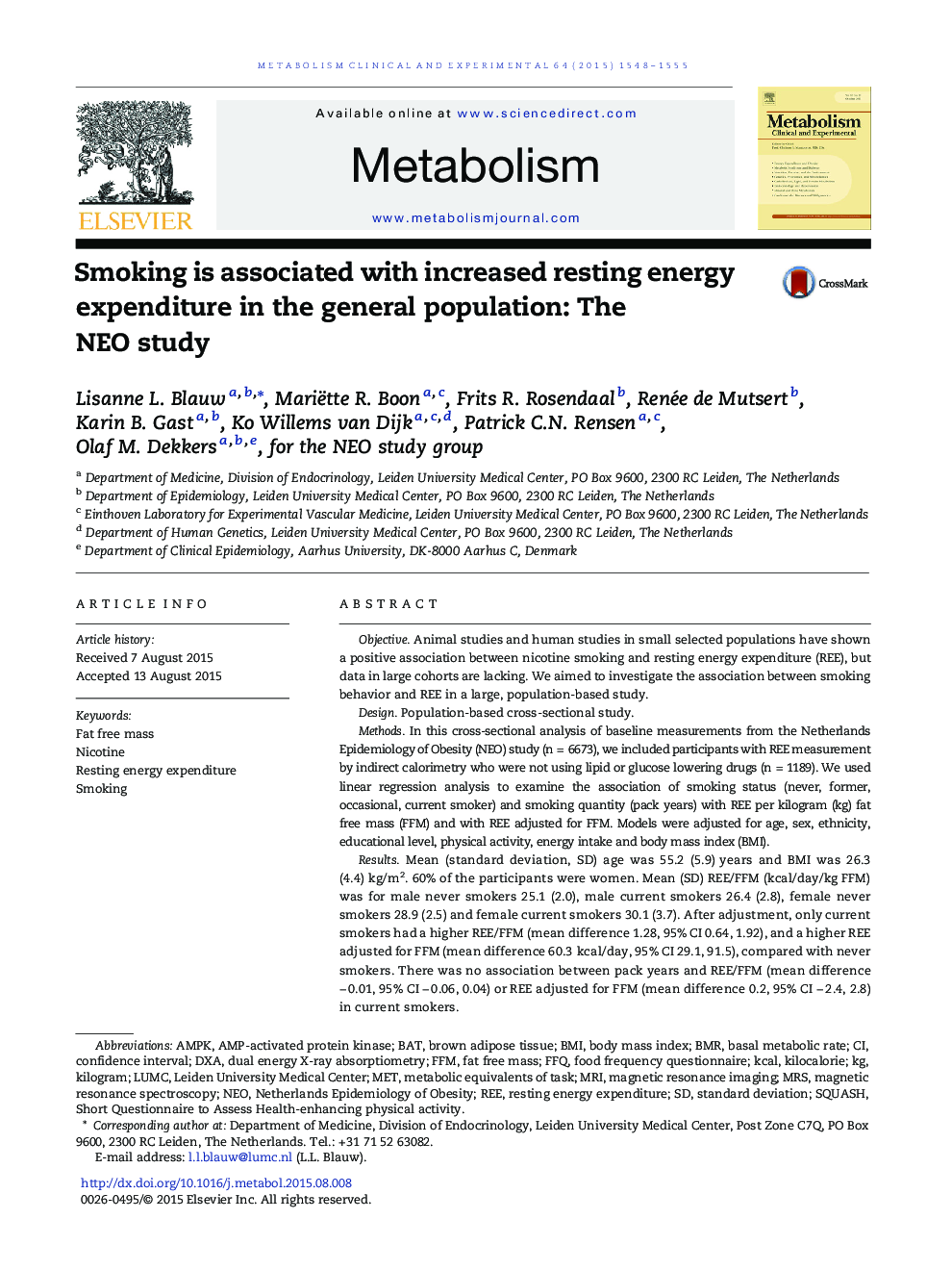| کد مقاله | کد نشریه | سال انتشار | مقاله انگلیسی | نسخه تمام متن |
|---|---|---|---|---|
| 2805381 | 1157045 | 2015 | 8 صفحه PDF | دانلود رایگان |

ObjectiveAnimal studies and human studies in small selected populations have shown a positive association between nicotine smoking and resting energy expenditure (REE), but data in large cohorts are lacking. We aimed to investigate the association between smoking behavior and REE in a large, population-based study.DesignPopulation-based cross-sectional study.MethodsIn this cross-sectional analysis of baseline measurements from the Netherlands Epidemiology of Obesity (NEO) study (n = 6673), we included participants with REE measurement by indirect calorimetry who were not using lipid or glucose lowering drugs (n = 1189). We used linear regression analysis to examine the association of smoking status (never, former, occasional, current smoker) and smoking quantity (pack years) with REE per kilogram (kg) fat free mass (FFM) and with REE adjusted for FFM. Models were adjusted for age, sex, ethnicity, educational level, physical activity, energy intake and body mass index (BMI).ResultsMean (standard deviation, SD) age was 55.2 (5.9) years and BMI was 26.3 (4.4) kg/m2. 60% of the participants were women. Mean (SD) REE/FFM (kcal/day/kg FFM) was for male never smokers 25.1 (2.0), male current smokers 26.4 (2.8), female never smokers 28.9 (2.5) and female current smokers 30.1 (3.7). After adjustment, only current smokers had a higher REE/FFM (mean difference 1.28, 95% CI 0.64, 1.92), and a higher REE adjusted for FFM (mean difference 60.3 kcal/day, 95% CI 29.1, 91.5), compared with never smokers. There was no association between pack years and REE/FFM (mean difference − 0.01, 95% CI − 0.06, 0.04) or REE adjusted for FFM (mean difference 0.2, 95% CI − 2.4, 2.8) in current smokers.ConclusionCurrent smoking is associated with a higher resting energy expenditure compared with never smoking in a large population-based cohort.
Journal: Metabolism - Volume 64, Issue 11, November 2015, Pages 1548–1555